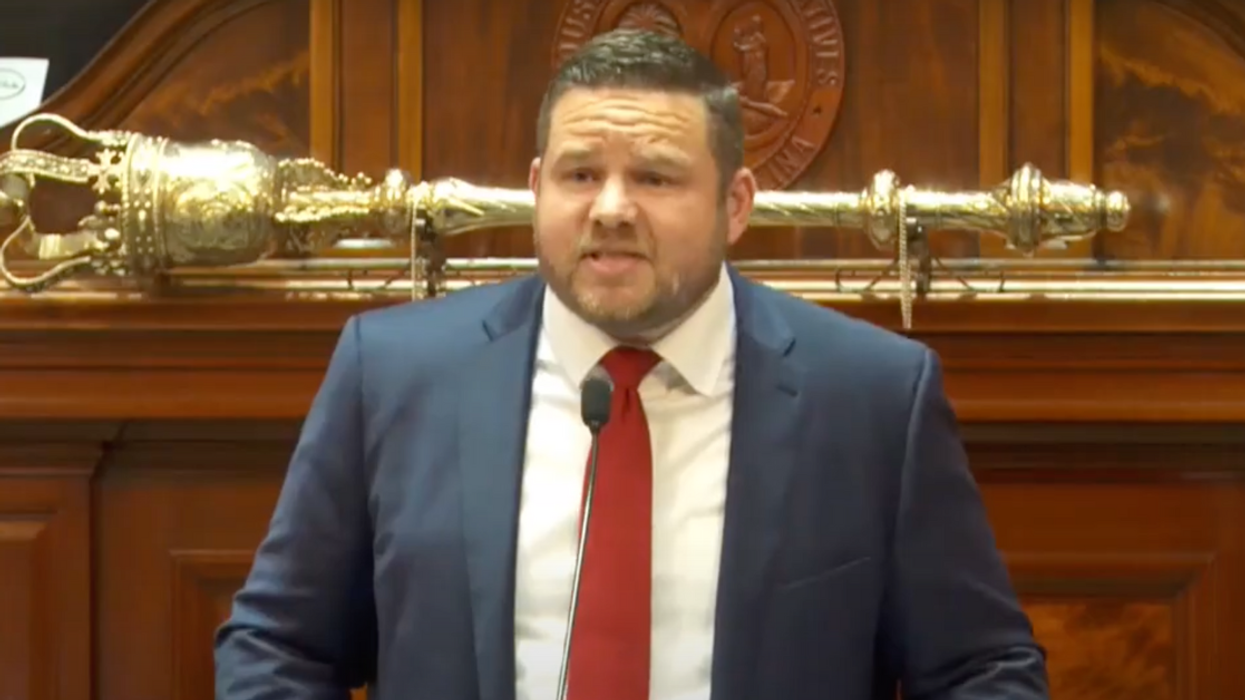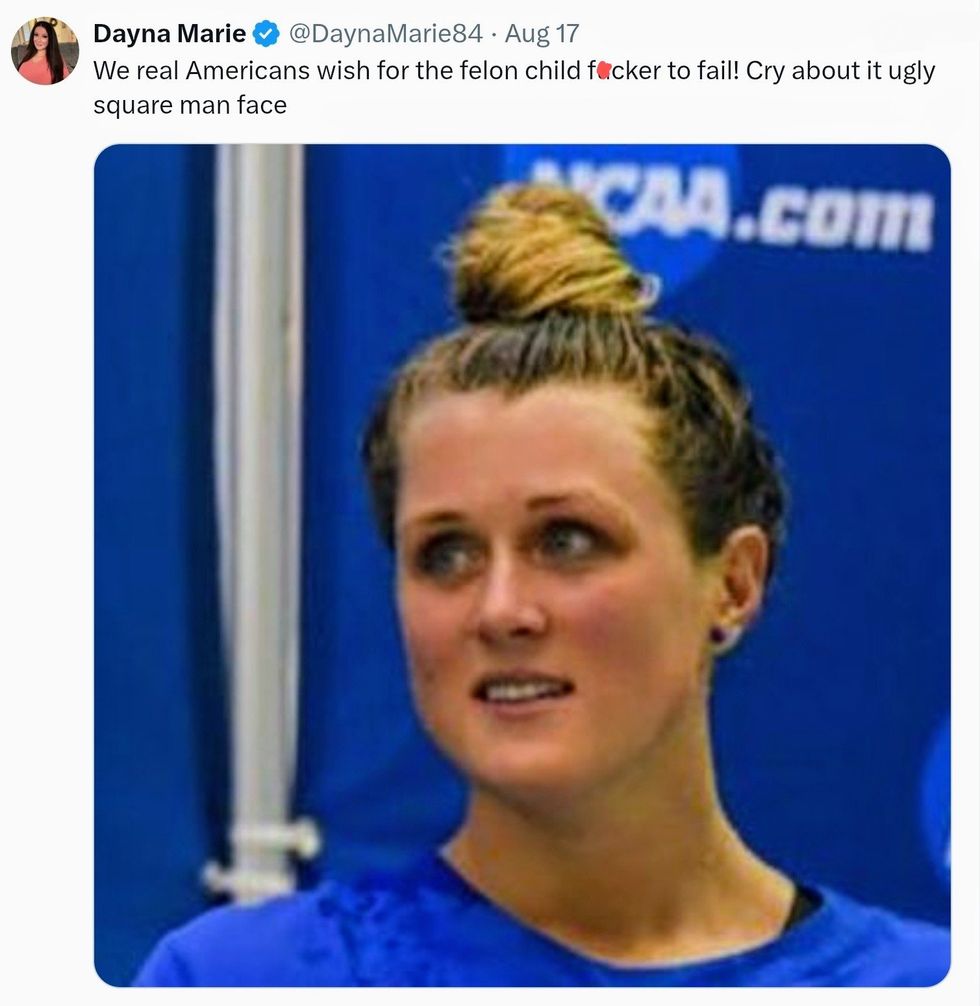A woman has spoken of the touching bond she shares with the three-legged rescue dog she said “saved her life" after a string of devastating diagnoses.
Things became very difficult for Amanda Shaw, 38, when, having suffered from severe asthma since she was a child, she was also diagnosed with arthritis and Addison's disease, a rare disorder of the adrenal glands, which produce essential hormones.
Eventually, her health declined to the point where she had to take a year off from her job as a medical researcher.

But, deciding to turn a negative into a positive, she used her newfound free time to do something she had always wanted – adopt a dog.
After visiting a local shelter, she fell in love with a Staffordshire Terrier-cross, Lister, who had been left in a sorry state, nursing a broken leg that eventually had to be amputated.
Now, Amanda, of Yeadon, West Yorkshire, has praised her three-legged pooch for saving her life, ensuring her relationship with her husband James, 33, has lasted, and even becoming her “child" after she discovered she could not conceive.

She said: “When we first met Lister, he was as happy as could be, climbing onto our laps, wagging his tail and licking us non-stop.
“In that second I knew he had a fighting spirit and that was something I saw in myself – or wanted to see in myself. He didn't mope or whinge at all. It was a done deal from then.
“James and I found out this year that having our own children isn't an option for us. We were hoping to try IVF, but results showed that James' sperm were unable to fertilise an egg, and, after a lot of counselling, we decided not to explore other routes."

She continued: “While obviously it has been hard, Lister has kept us going through it all.
“If it wasn't for him, I'm not sure our relationship would have lasted. There are still dark days, but we make it through. Lister is our child and he's made us a family."
Suffering with severe asthma – a specific type of the condition, which affects an estimated 200,000 people in the UK, according to charity Asthma UK – since childhood, Amanda, who now works from home as a medical researcher, can find herself severely breathless with no warning.
I can be perfectly fine like everyone else and then, a few hours later, I'm struggling to breathe and being rushed to hospital.
Amanda Shaw
Along with an inhaler, Amanda uses a nebuliser – a machine that vaporises medicine into a mist so that it can be administered quicker – every morning.
Explaining the condition, she continued: “I can be perfectly fine like everyone else and then, a few hours later, I'm struggling to breathe and being rushed to hospital.
“Because my asthma is severe, my body doesn't respond to an inhaler as well as it should. It's scary but I've been in hospital so many times now that I have become desensitised."

One of the most difficult parts of having asthma for Amanda is the impact it has on her social life.
Dubbing it a “hidden illness," she said that her plans can change last minute if she suddenly feels unwell, leading her to fret that she appears flaky.
But one person who understands only too well the seriousness of the condition is James, who Amanda met while volunteering as a first aider for St John's Ambulance, where he works on the logistics team, in 2008.

“I've always had to rely on the kindness of strangers with my condition and wanted to give something back to the community, so I volunteered to become a first aider," Amanda recalled.
“That's where I met James. He knows all too well how serious my asthma can be."
In November 2011, Amanda's health went from bad to worse when she was struck down with severe abdominal pains.

Worried, James raced her to Harrogate District Hospital, West Yorkshire, where doctors suspected that she had appendicitis, a painful swelling of the appendix which, if it bursts, can be fatal.
Recognising the tell-tale signs, they removed her appendix in an operation that lasted a couple of hours.
But, after being kept in for a week after her surgery for observation, it became clear her symptoms were not improving.
“All my symptoms were tell-tale signs of appendicitis but after removing it, they continued," she said.
“Addison's is very difficult to diagnose. It was one of those things where you look for the obvious and I completely understand why they removed my appendix."
After running further tests, doctors discovered Amanda had abnormally low levels of cortisol – the 'fight or flight' hormone – in her system, which led them to officially diagnose her with Addison's disease.

According to the NHS, the condition affects around 8,400 people in the UK and means that, as the adrenal gland is damaged, the hormones cortisol and aldosterone are either severely lacking or not produced at all.
Though symptoms, including fatigue, muscle weakness, fainting, low mood and cramps, can be controlled, sufferers live at constant risk of an adrenal crisis, when levels of cortisol significantly and suddenly fall which, if untreated, can be fatal.
“I didn't know much about the condition when I got the diagnosis but after going home and doing research, I realised just how serious the condition can be," said Amanda, adding that she will need to take medication for the rest of her life to replace the missing hormones.

In the years that followed her diagnosis, Amanda's health declined even more.
She would be plagued by constant fatigue, dizzy spells and headaches which could last every waking second of the day.
Throughout 2014, she was forced to take more and more time off work, until eventually, in February 2015, she agreed with her doctors to go on indefinite leave.

“In some ways I feel very lucky, Addison's disease can be so serious – people die," she explained.
“But on the other side of things, I wasn't able to do simple things that I loved. I've always worked, and I want to work – not being able to was crushing."
One silver lining of Amanda no longer being at work all day meant she finally had the time to adopt a four-legged friend to have around the house and keep her company.
It was a great motivator for me to get off the sofa, turn off the telly and do something with my time.
Amanda Shaw
In November 2015, she and James headed to their local Dogs Trust rescue centre, where the manager told them about Lister, who'd been brought in just a few hours earlier with a broken leg.
As soon as Amanda clapped eyes on the pooch, she fell in love and agreed to take him home.
At first, with a cast on his leg, Lister was on strict bed rest.

After four weeks, though, he began to explore his new surroundings, and having an active pup helped Amanda get into the routine of taking him out for his morning and evening walk.
“It was a great motivator for me to get off the sofa, turn off the telly and do something with my time," she explained.
Sadly, in January 2016, two months after taking Lister home, Amanda was dealt yet another blow when she started suffering with stiff joints and swollen “sausage fingers."

Initially, she thought it was related to her Addison's disease and visited the GP, but after being referred to a rheumatologist at Harrogate District Hospital near Leeds, she was diagnosed with psoriatic arthritis.
The condition, which causes swollen, stiff and painful joints, is being managed with weekly injections of methotrexate, an anti-rheumatic drug that eases pain and slows down its progression, and injections of infliximab, a drug that prevent inflammation, every six weeks.
Despite her latest diagnosis, looking after Lister, including doing weekly doggy training, was a great motivator, and Amanda found her energy and strength levels higher than ever.

“As time went on a five-minute walk became 45 minutes, and before I knew it, I was doing weekly 5k runs with Lister in tow," she added.
Sadly, in July 2018, the family faced another health crisis – this time, with Lister, when he began showing signs of discomfort in his front right leg, the one that had been broken when he was found.
Amanda continued: “Ever since we adopted Lister, we've gone back to our vets, supported by Dogs Trust, regularly, for them to monitor his leg."
She added: “Unfortunately, it was such a bad fracture in the first place, his bones weren't growing correctly, and it was becoming painful.
“He even developed arthritis, just like me. It became clear that for him to be pain free, amputation was the best option."
In July 2018, little Lister had his leg amputated – but his resilient spirit meant that, within hours of being collected by Amanda, he was leaping around once again.

Initially thinking it would take months for Lister to build up his walking with just three legs, within the month he was back doing two half-hour walks a day.
Currently, Amanda's conditions are being effectively managed, and having increased her fitness levels thanks to Lister, she signed up for this year's Great North Run on September 8.
“It sounds funny, considering all the running I do, but sometimes even getting out of the bath can be difficult and holding certain kitchen tools can be a pain because of my combination of illnesses," she said.

“But the pain of running is outweighed by the mental wellbeing and the controlled breathing that comes from it."
After completing the gruelling race and raising hundreds of pounds for Dogs Trust, Amanda added: “I committed to running, walking and crawling the Great North Run if necessary. I did it and Lister was there at the end to congratulate me.
“He is an absolute joy. A dog is for life and Lister has given me my life back."

She added: “I know he'll always be there for me and we will always be there for him.
“Whatever we face in the future, we'll face it together. I know we rescued him, but he rescued me too."








 @robbyfacerinc/Instagram
@robbyfacerinc/Instagram @jkfouche/Instagram
@jkfouche/Instagram @yvettenicolebrown/Instagram
@yvettenicolebrown/Instagram @lindadenisefisherharrell/Instagram
@lindadenisefisherharrell/Instagram @kenmos/Instagram
@kenmos/Instagram @phillipgburke/Instagram
@phillipgburke/Instagram @nadiasimonestiell/Instagram
@nadiasimonestiell/Instagram @toweroftaylor_/Instagram
@toweroftaylor_/Instagram @angelabirchett/Instagram
@angelabirchett/Instagram @amberiman_/Instagram
@amberiman_/Instagram @kimstookey/Instagram
@kimstookey/Instagram










 @Riley_Gaines_/X
@Riley_Gaines_/X @Riley_Gaines_/X
@Riley_Gaines_/X @Riley_Gaines_/X
@Riley_Gaines_/X @Riley_Gaines_/X
@Riley_Gaines_/X @Riley_Gaines_/X
@Riley_Gaines_/X @Riley_Gaines_/X
@Riley_Gaines_/X @Riley_Gaines_/X
@Riley_Gaines_/X
